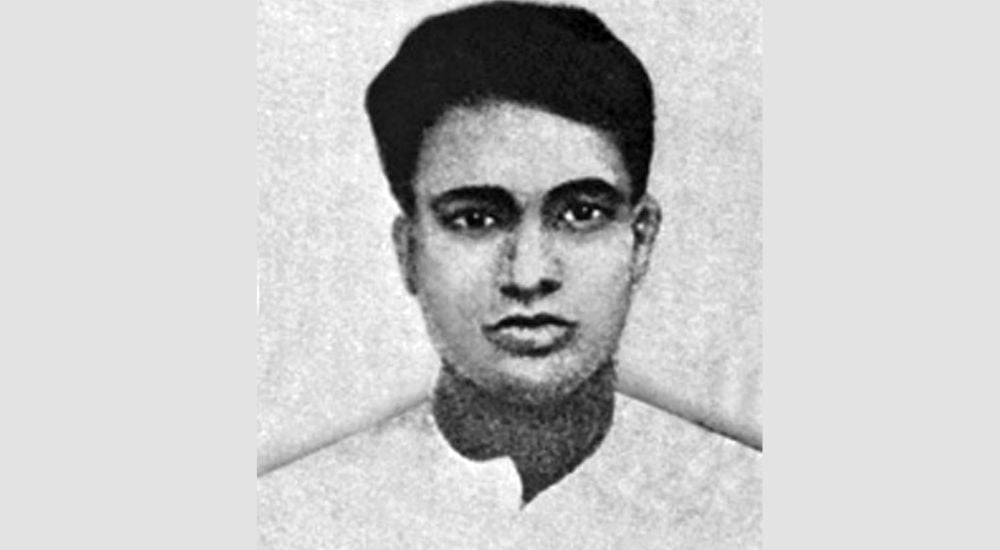Dinesh Gupta Biography
Date of Birth: 6 December 1911
Place of Birth: Josholong, Bikrampur, Bengal Presidency, British India (present-day Bangladesh)
Date of Death: 7 July 1931 (aged 19)
Place of Death: Alipore Jail, Calcutta, Bengal Presidency, British India.
Cause of death: Execution by hanging
Alma mater: Dhaka College
Famous for: Writers’ Building attack
Who was Dinesh Gupta?
Dinesh Gupta, full name Dinesh Chandra Gupta was an Indian freedom fighter and revolutionary, against British rule in India.
He is well-known for launching an attack with the aid of Badal Gupta and Benoy Basu on the Secretariat Building – the Writers’ Building in the Dalhousie square in Calcutta.
He was born on December 6, 1911, in the village of Josholong in Munshiganj. His father was Satishchandra Gupta.
Maya Gupta Sen, a proponent of and instructor in the art of Rabindrasangeet, was his own niece. Even he advised Ashalata Gupta, his sister-in-law to let Maya learn Rabindrasangeet.
Dr. Tapan Gupta, his nephew, founded “the Tagoreans” in London. Tanika Gupta, an MBE, and playwright who frequently contributes to the BBC and the English theatre, is the daughter of Mr. Gupta.
When Dinesh Chandra enlisted with the Bengal Volunteers, he was a Dhaka College student. The Bengal Volunteers soon evolved into a more radical organization with assassination plans for specific Indian Imperial Police personnel.
Gupta rapidly earned the rank of captain and assisted in setting up the revolutionary group, initially in Munshiganj district and afterward in Midnapore.
Three Midnapore district magistrates, Douglas, Burge, and Peddy, were fatally shot were killed as a result of the planning and coordination of this organization.
Dinesh Gupta Attack on Secretariat Building
The organization specifically targeted Lt Col NS Simpson, the Inspector General of Prisons, who was notorious for abusing the prisoners in the prisons.
In addition to killing him, the revolutionaries in Kolkata planned to attack the Secretariat Building, popularly known as the Writers’ Building, in Dalhousie Square in order to terrorize British colonial circles.
As per the plan, on December 8, 1930, Dinesh Gupta along with Badal Gupta and Benoy Basu entered the writer’s building in European attire and shot Simpson to death.
In response, nearby police officers started firing at the trio and a gunfight broke out between them. During the fight, some police officers including Twynam, Prentice, and Nelson, sustained injuries.
The trio fought valiantly till the police overpowered them. They didn’t want to be apprehended by the police, that’s why they killed themselves.
While Benoy and Dinesh shot themselves with their own revolvers, Badal Gupta swallowed potassium cyanide. After being transferred to the hospital, Benoy passed away on December 13, 1930.
However, Dinesh survived his severe injury but was found guilty and given the death penalty.
He penned letters to his sister from Alipore Jail that was eventually collected into the book “Ami Shubhash Bolchhi.” Dinesh Chandra Gupta was hung at Alipur Jail on July 7, 1931, when he was just 19 years old.
Soon after his death, on July 27, 1931, Kanailal Bhattacharjee assassinated Mr. Galik, the judge in the Dinesh Gupta case, as retaliation for the hanging.
Commemoration
Supporters in Bengal and other areas of India treated Benoy, Badal, and Dinesh as martyrs. In honour of the Benoy-Badal-Dinesh trio, Dalhousie Square has renamed B. B. D. Bagh after independence.
A plaque commemorating their writers’ attack was inscribed on the first-floor wall of the Writers’ Building.
Most Frequently Asked Questions
Ans: The Inspector General of Prisons
Ans: Dinesh Chandra Gupta was hung at Alipur Jail on July 7, 1931, at the age of 19.
Ans: Badal along with Dinesh Gupta and Benoy, dressed in European costume and attacked the Writers Building.
